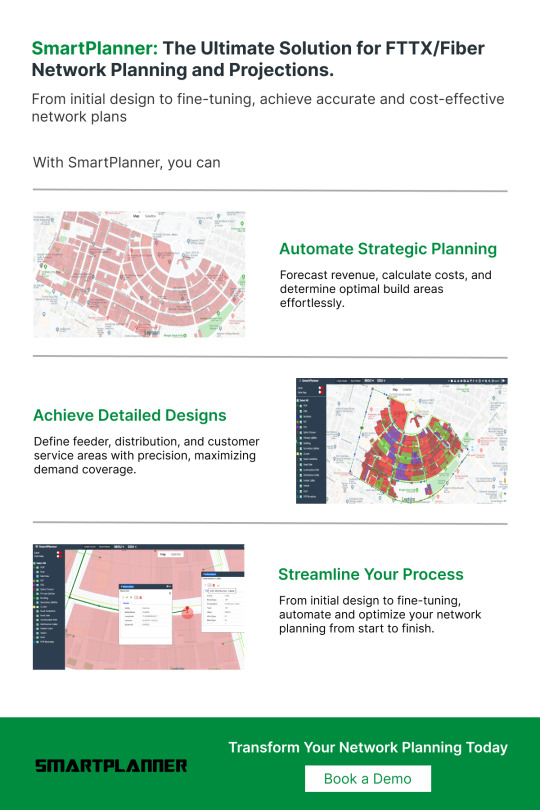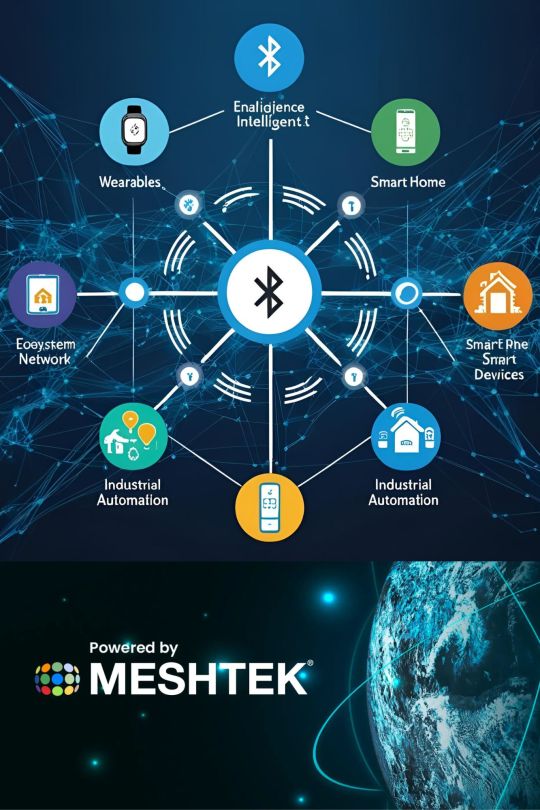#network automation
Explore tagged Tumblr posts
Text
Mastering Network Automation and Infrastructure Monitoring
The complex data and digital technologies that make up today’s modern world rely upon an intricately interconnected web of network infrastructure. As more people and organizations continue to rely on digital devices and the data they provide, it becomes increasingly necessary to maintain a secure and resilient network performance.
For More Details visit us: https://www.motadata.com/blog/modern-it-network-automation-and-infrastructure-monitoring/
1 note
·
View note
Text
Cisco Research Highlights Major Infrastructure Shift with AI Integration
Cisco’s AI-Powered Network Revolution: Transforming Infrastructure for the Future
In a rapidly evolving technological landscape, Cisco is spearheading a major transformation in network infrastructure through AI integration. Unlike conventional AI applications that focus on consumer products or software automation, Cisco’s approach revolves around building an “AI-native infrastructure” designed to meet the complex demands of enterprise networks and next-gen AI workloads. This shift is not just a technological upgrade but a strategic move to redefine how businesses operate, secure their data, and deliver seamless digital experiences worldwide. This article explores Cisco’s vision, innovations, and the broad impact of this infrastructure revolution.
Table of Contents
Redefining Network Architecture with AI-Native Foundations
AI-Driven Security: Protecting the Future of Enterprise Networks
Enhancing Network Visibility and Automation Through AI Operations
Cisco’s AI Infrastructure Investment
Empowering Businesses and Communities Worldwide
The Path Forward for AI-Enabled Infrastructure
Quotes:
FAQs:
Redefining Network Architecture with AI-Native Foundations
Cisco’s groundbreaking research highlights the urgency of rebuilding network infrastructure to support the exponential growth of AI, IoT, and cloud applications. Rather than merely adding AI tools on top of existing systems, Cisco is pioneering networks architected from the ground up to handle the intense compute, bandwidth, and latency requirements of AI workloads. This includes the development of custom Ethernet fabrics optimized for AI/ML clusters using NVIDIA and AMD GPUs, enabling faster data throughput and real-time analytics.

The initiative began as early as 2023 when Cisco started investing heavily in research and partnerships aimed at designing hardware and software ecosystems that would not only support but accelerate AI adoption. By 2025, Cisco publicly launched a suite of AI-native network products, showcasing how networks can dynamically adapt to data flows, improve reliability, and automate routine tasks.
This architecture matters because traditional networks struggle under the weight of modern AI and cloud demands, often causing bottlenecks and security vulnerabilities. Cisco’s AI-native infrastructure aims to eliminate these challenges by offering scalability, resilience, and intelligent automation, which in turn drives business efficiency and innovation.
AI-Driven Security: Protecting the Future of Enterprise Networks
Security is a core pillar of Cisco’s AI strategy. As cyber threats grow increasingly sophisticated, Cisco leverages AI and machine learning to detect anomalies, prevent breaches, and analyze encrypted traffic without compromising privacy. Their AI-powered security platforms use behavioral analysis to identify threats that traditional systems might miss and enable automatic remediation, reducing response times drastically.
Cisco introduced this integrated security approach alongside their AI-native infrastructure, positioning it as an essential tool for enterprises transitioning to hybrid and multi-cloud environments. This strategy aligns with Cisco’s Zero Trust architecture, which assumes breaches will happen and continuously validates every device and user.
This AI-empowered security not only protects sensitive data but also ensures business continuity, making it a critical enabler for companies worldwide to embrace digital transformation with confidence. It is particularly beneficial for industries like finance, healthcare, and government sectors where data protection is paramount.
Read More : Cisco Research Highlights Major Infrastructure Shift with AI Integration
#Cisco#AI integration#network infrastructure#artificial intelligence#enterprise networks#AI-powered security#digital transformation#cloud computing#IoT#AI operations#network automation#cybersecurity#tech innovation#IT infrastructure#machine learning#predictive analytics#global connectivity#infrastructure modernization#AI in business#future of networking
0 notes
Text
Globe Telecom Partners With Netcracker for OSS Transformation Services to Improve Operational Excellence and Deliver a Seamless Digital Customer Experience
Leading Operator in the Philippines Benefits From Improved Fulfillment, Greater Business Efficiency and Ability to Scale Across Lines of Business.
Netcracker Technology announced today that Globe Telecom, the leading telecom operator in the Philippines and regional associate of the Singtel Group, will expand its partnership with Netcracker for Service and Network Automation to achieve a higher level of operational efficiency, enabling Globe to better serve its customers with improved network performance and seamless digital experiences.
Netcracker will provide various services covering support for mission-critical processes such as order fulfillment, fallout management, service quality, proactive monitoring and performance management to accelerate Globe’s business objectives, including growing its broadband business. The operator will continue to benefit from faster issue resolution and improved order processing time.
Read the full article to learn more about Globe Telecom’s OSS transformation journey with Netcracker.
0 notes
Text
Intent-based Networking Market to be Worth $8.9 Billion by 2031
Meticulous Research®— a leading global market research company, published a research report titled, 'Intent-based Networking Market by Offering, Deployment Mode, Organization Size, Application (Network Automation & Orchestration, Policy Enforcement & Security, Network Monitoring & Analytics), End User, and Geography - Global Forecast to 2031’.
According to this latest publication from Meticulous Research®, the intent-based networking market is projected to reach $8.9 billion by 2031, at a CAGR of 23.9% from 2024 to 2031. The intent-based networking market's growth is driven by increasing network complexity, the growing demand for network agility and efficiency, and the rising need for Zero-touch Provisioning (ZTP) and unified network visibility. However, the standardization restrains the growth of this market.
The integration of networking with Artificial Intelligence (AI) & Machine Learning (ML) technologies and the increasing adoption of cloud-based networking are expected to generate growth opportunities for the players operating in this market. However, complexities in the deployment & integration of intent-based networking solutions are a major challenge for market growth.
The global intent-based networking market is segmented by offering (solutions and services), deployment mode (on-premise deployment and cloud-based deployment), organization size (large enterprises and small & medium-sized enterprises), application (network automation & orchestration, policy enforcement & security, dynamic network optimization, network monitoring & analytics, and network policy compliance & governance), end user (CSPs, data centers, and enterprises (IT & telecommunications, manufacturing, government & public sector, retail, BFSI, healthcare and life sciences, education, energy and utilities, media & entertainment, and other end-use industries), and geography (Asia-Pacific, Europe, North America, Latin America, and the Middle East & Africa). This study also evaluates industry competitors and analyzes the market at the country and regional levels.
Based on offering, the global intent-based networking market is broadly segmented into solutions and services. In 2024, the solutions segment is expected to account for a larger share of above 60% of the global intent-based networking market. The growth of this segment is attributed to the increasing R&D investments and rising demand for dynamic connectivity among communication service providers.
However, the services segment is anticipated to register the highest CAGR during the forecast period. This segment’s rapid growth is driven by enterprises’ growing requirements for network integration and key market players’ emphasis on providing advanced network automation professional services.
Based on deployment mode, the global intent-based networking market is segmented into on-premise deployment and cloud-based deployment. In 2024, the on-premise deployment segment is expected to account for a larger share of above 64% of the global intent-based networking market. This segment’s growth is attributed to the high acceptance of intent-based networking among large enterprises, the rising demand for comprehensive network security and control, the increasing deployment of network automation solutions across on-premises data centers, and the growing demand for custom configurations to suit organizations’ unique requirements. Benefits of on-premise deployment of intent-based networking include enhanced network visibility, reduced manual configuration efforts, improved network security, better compliance with business objectives, and overall increased network efficiency and reliability.
However, the cloud-based deployment segment is expected to register the highest CAGR during the forecast period. The segment’s growth is driven by enterprises’ surging need to manage complex network requirements and reduce infrastructures’ initial and operating expenses and their increasing investments in network infrastructure expansion with cloud deployment.
Based on organization size, the global intent-based networking market is broadly segmented into large and small & medium-sized enterprises. In 2024, the small & medium-sized enterprises segment is expected to account for the larger share of above 63% of the global intent-based networking market. This segment’s growth is attributed to the SMEs’ rising need to create agile, secure, and efficient work environments and the growing demand for intent-based networking solutions among SMEs operating in the education, retail, healthcare, manufacturing, government, and manufacturing sectors.
Moreover, this segment is also poised to record the highest CAGR during the forecast period.
Based on application, the global intent-based networking market is broadly segmented into network automation & orchestration, policy enforcement & security, dynamic network optimization, network monitoring & analytics, and network policy compliance & governance. In 2024, the network monitoring & analytics segment is expected to account for the largest share of 36% of the global intent-based networking market. This segment’s growth is attributed to the increasing use of network monitoring among organizations to identify and resolve issues promptly, growing demand for network monitoring tools demand for enhanced network security and increasing demand for highly reliable and scalable network monitoring solutions.
Furthermore, the network automation & orchestration segment is anticipated to record the highest CAGR during the forecast period. This segment's growth is driven by the growing demand for safe and smart healthcare systems with intent-based networking technology, the growing need to detect and identify old hardware, compliance issues, and storage issues, and the increasing need for zero-touch provisioning and unified network visibility.
Based on end user, the global intent-based networking market is segmented into CSPs, data centers, and enterprises. In 2024, the data centers segment is expected to account for the largest share of 42% of the global intent-based networking market. This segment’s growth is attributed to the data centers’ growing need to automate routine workflows and processes, reduce repetitive/mundane tasks, speed up processes, and drive down overheads, and the increasing deployment of network automation solutions among data centers. However, the enterprises segment is expected to record the highest CAGR during the forecast period. It is further sub-segmented into IT & telecommunications, manufacturing, government & public sector, retail, BFSI, healthcare & life sciences, education, energy & utilities, media & entertainment, and other end-use industries. This segment’s rapid growth is driven by the rising demand for intent-based networking solutions and increasing deployments of network automation solutions across enterprises.
Based on geography, the intent-based networking market is segmented into North America, Europe, Asia-Pacific, Latin America, and the Middle East & Africa. In 2024, North America is expected to account for the largest share of 37% of the global intent-based networking market. This region’s large market share is attributed to an established sales force for network automation solutions, service providers’ initiatives towards network automation, and increasing demand for data center and IT infrastructure automation.
Moreover, Asia-Pacific is estimated to register the highest CAGR of 11% during the forecast period. The increasing deployment of SDN and NFV by enterprises and rising demand for a broad range of value-added network services are the major factors contributing to the market's growth.
Key Players
The key players operating in the global intent-based networking market are Arista Networks, Inc. (U.S), Cisco Systems, Inc. (U.S.), Juniper Networks, Inc (U.S.), Fortinet, Inc. (U.S.), VMware, Inc. (U.S.), Hewlett Packard Enterprise Company (U.S.), Nokia Corporation (Finland), Huawei Technologies Co., Ltd. (China), IBM Corporation(U.S.), Anuta Networks International LLC (U.S.), NetBrain Technologies, Inc. (U.S.), Forward Networks, Inc. (U.S.), Gluware, Inc. (U.S.), NetYCE BV (Netherlands), AppViewX (U.S.), and Itential (U.S.).
Download Sample Report Here @ https://www.meticulousresearch.com/download-sample-report/cp_id=5593
Key questions answered in the report-
Which are the high-growth market segments in terms of offering, deployment mode, organization size, application, and end user?
What is the historical market for intent-based networking across the globe?
What are the market forecasts and estimates for the period of 2024–2031?
What are the major drivers, restraints, opportunities, challenges, and trends in the global intent-based networking market?
Who are the major players in the global intent-based networking market, and what are their market shares?
How is the competitive landscape?
What are the recent developments in the global intent-based networking market?
What do the major players in the market adopt the different strategies?
What are the geographic trends and high-growth countries?
Who are the emerging players in the global intent-based networking market, and how do they compete with the other players?
Contact Us: Meticulous Research® Email- [email protected] Contact Sales- +1-646-781-8004 Connect with us on LinkedIn- https://www.linkedin.com/company/meticulous-research
#Intent-based Networking Market#Zero-touch Provisioning (ZTP)#Zero trust networking#Network Automation#Network Orchestration#Network Policy Enforcement#Network Integration#Next-generation Firewall (NGFW)#Network Security#Network Optimization#Network Monitoring & Analytics#Network Policy Compliance#Software-Defined Wide Area Network (SD-WAN)#Data Centers
0 notes
Text

Lepton Software's SmartPlanner offers advanced tools for accurate and efficient FTTX/fiber network planning, featuring interactive maps and comprehensive network analysis. Enhance your network with precise line of sight analysis and sector-level macro-analytics. Learn more about our innovative solutions at Lepton Software's SmartInventory and NetworkAccess.
#smartplanner#network automation#network optimization#network planning#network design#telecom#lepton software#fiber planning#network planning tool#fiber planning tool#gis
0 notes
Text
Optimizing Operations with Network Automation: Best Practices and Solutions

Network Automation is a game-changer in the realm of IT operations, offering a plethora of benefits for optimizing network management tasks. To harness its full potential, organizations must adopt best practices and implement effective solutions. In this blog post, we will explore some key best practices and solutions for optimizing operations with Network Automation.
Automating Routine Tasks
The cornerstone of Network Automation lies in automating routine tasks such as configuration changes, device provisioning, and network monitoring.
By automating these repetitive tasks, organizations can streamline operations, reduce manual errors, and improve overall efficiency.
Utilizing Orchestration Tools
Orchestration tools play a crucial role in managing and coordinating automated processes within the network.
Network Automation tools provide a centralized platform for designing, executing, and monitoring automation workflows, ensuring seamless integration and efficient operation.
Implementing Self-Healing Mechanisms
Self-healing mechanisms leverage Network Automation to detect and remediate network issues automatically.
By implementing proactive monitoring and alerting systems coupled with automated remediation scripts, organizations can minimize downtime and improve network reliability.
Integrating with Monitoring and Analytics
Integrating Network Automation with monitoring and analytics tools enhances visibility and insight into network performance.
By collecting and analyzing real-time data, organizations can identify trends, predict potential issues, and proactively optimize network resources.
Standardizing Configuration Management
Standardizing configuration management practices is essential for maintaining consistency and compliance across the network infrastructure.
Network Automation enables organizations to enforce standardized configurations, ensure adherence to security policies, and streamline auditing and compliance processes.
Implementing Change Management Processes
Implementing robust change management processes is critical for managing network changes effectively.
Network Automation can facilitate change management by automating change requests, approvals, and deployment processes, ensuring minimal disruption and maximum efficiency.
Get More Insights On This Topic: Network Automation
#Network Automation#IT Automation#DevOps#Network Management#Automation Tools#Software Defined Networking#Infrastructure Automation#Cloud Computing
0 notes
Text

Network Automation – Infinity Labs
Network automation is the process of automating the configuring, managing, testing, deploying, and operating of physical and virtual devices.
0 notes
Note
I discovered I can make chatgpt hallucinate tumblr memes:


This is hilarious and also I have just confirmed that GPT-4 does this too.



Bard even adds dates and user names and timelines, as well as typical usage suggestions. Its descriptions were boring and wordy so I will summarize with a timeline:

I think this one was my favorite:

Finding whatever you ask for, even if it doesn't exist, isn't ideal behavior for chatbots that people are using to retrieve and summarize information. It's like weaponized confirmation bias.

more at aiweirdness.com
#neural networks#chatbots#automated bullshit generator#fake tumblr meme#chatgpt#gpt4#bard#image a turtle with the power of butter#unstoppable
1K notes
·
View notes
Text
i have no computer goals. i dont have any computer wants or needs. im likea computer buddhist. this is my main barrier to coding
#i dont need to automate anything.#i dont really care about networks or graphics programming.#i dont really want to do anything hardware related.#and i DONT want to make websites.
127 notes
·
View notes
Text
honestly wish the qsmp made more use of the novelty that is Mail. like "man i really need to get a message to cellbit but i don't know when we'll be on at the same time :(" leave one of those supplementaries presents that only opens for the matching username that has a book in it signed by you detailing everything you needed to tell him, or if you need to send off a bunch of things leave a security chest buried under or behind something and send a coded message with its location. cmon. Mail. Postal Service. Quesadilla Postal Service Mail, the QPSM if you will. (if your language can make it QSMP plEASE jump on)
missed opportunity. send more letters that aren't badboyhalo's debt collection.
#qsmp#like wilbur sending a strongly worded letter to bobby's parents#shut up vic#block game brainrot#i'm biased bc i would absolutely love to be a postal clerk in a friend minecraft server's post office#but yea i mean tubbo's getting a train network set up i'm sure he could handle automating letter sending both over and under the table
202 notes
·
View notes
Text

The complex data and digital technologies that make up today’s modern world rely upon an intricately interconnected web of network infrastructure.
As more people and organizations continue to rely on digital devices and the data they provide, it becomes increasingly necessary to maintain a secure and resilient network performance.
As networks grow more complex, configuration changes. Moreover, a comprehensive network monitoring and automation strategy is key to avoiding downtime or security issues and ensure hassle free network operations.
Adopting these strategies ensures no network downtime, reduced server operational costs, adequate security policies for better data storage, and various cloud environments.
0 notes
Text

#a.b.e.l#divine machinery#archangel#automated#behavioral#ecosystem#learning#divine#machinery#ai#artificial intelligence#divinemachinery#angels#guardian angel#angel#robot#android#computer#computer boy#neural network#sentient objects#sentient ai
14 notes
·
View notes
Text
MeshTek’s Vision: Empowering IoT with Bluetooth Mesh Networking

MeshTek’s robust Bluetooth Mesh Networking ecosystem—seamlessly linking smart homes, wearables, industrial automation, and connected devices into one intelligent grid. It illustrates how MeshTek empowers secure, low-energy, and scalable communication across complex environments, enabling real-time control, optimized performance, and unmatched flexibility. Built to support everything from smart devices to enterprise-level automation, MeshTek’s platform is at the heart of next-gen IoT transformation.
#Bluetooth Mesh Networking#MeshTek#smart automation#connected devices#industrial IoT#IoT ecosystem#smart home network#IoT infrastructure#wearable integration#scalable IoT platform#low-energy communication#real-time control#IoT app development#MeshTek technology#intelligent automation
2 notes
·
View notes
Text
Intent-based Networking Market Size, Share, Forecast, & Trends Analysis
Meticulous Research®— a leading global market research company, published a research report titled, 'Intent-based Networking Market by Offering, Deployment Mode, Organization Size, Application (Network Automation & Orchestration, Policy Enforcement & Security, Network Monitoring & Analytics), End User, and Geography - Global Forecast to 2031’.
According to this latest publication from Meticulous Research®, the intent-based networking market is projected to reach $8.9 billion by 2031, at a CAGR of 23.9% from 2024 to 2031. The intent-based networking market's growth is driven by increasing network complexity, the growing demand for network agility and efficiency, and the rising need for Zero-touch Provisioning (ZTP) and unified network visibility. However, the standardization restrains the growth of this market.
The integration of networking with Artificial Intelligence (AI) & Machine Learning (ML) technologies and the increasing adoption of cloud-based networking are expected to generate growth opportunities for the players operating in this market. However, complexities in the deployment & integration of intent-based networking solutions are a major challenge for market growth.
The global intent-based networking market is segmented by offering (solutions and services), deployment mode (on-premise deployment and cloud-based deployment), organization size (large enterprises and small & medium-sized enterprises), application (network automation & orchestration, policy enforcement & security, dynamic network optimization, network monitoring & analytics, and network policy compliance & governance), end user (CSPs, data centers, and enterprises (IT & telecommunications, manufacturing, government & public sector, retail, BFSI, healthcare and life sciences, education, energy and utilities, media & entertainment, and other end-use industries), and geography (Asia-Pacific, Europe, North America, Latin America, and the Middle East & Africa). This study also evaluates industry competitors and analyzes the market at the country and regional levels.
Based on offering, the global intent-based networking market is broadly segmented into solutions and services. In 2024, the solutions segment is expected to account for a larger share of above 60% of the global intent-based networking market. The growth of this segment is attributed to the increasing R&D investments and rising demand for dynamic connectivity among communication service providers.
However, the services segment is anticipated to register the highest CAGR during the forecast period. This segment’s rapid growth is driven by enterprises’ growing requirements for network integration and key market players’ emphasis on providing advanced network automation professional services.
Based on deployment mode, the global intent-based networking market is segmented into on-premise deployment and cloud-based deployment. In 2024, the on-premise deployment segment is expected to account for a larger share of above 64% of the global intent-based networking market. This segment’s growth is attributed to the high acceptance of intent-based networking among large enterprises, the rising demand for comprehensive network security and control, the increasing deployment of network automation solutions across on-premises data centers, and the growing demand for custom configurations to suit organizations’ unique requirements. Benefits of on-premise deployment of intent-based networking include enhanced network visibility, reduced manual configuration efforts, improved network security, better compliance with business objectives, and overall increased network efficiency and reliability.
However, the cloud-based deployment segment is expected to register the highest CAGR during the forecast period. The segment’s growth is driven by enterprises’ surging need to manage complex network requirements and reduce infrastructures’ initial and operating expenses and their increasing investments in network infrastructure expansion with cloud deployment.
Based on organization size, the global intent-based networking market is broadly segmented into large and small & medium-sized enterprises. In 2024, the small & medium-sized enterprises segment is expected to account for the larger share of above 63% of the global intent-based networking market. This segment’s growth is attributed to the SMEs’ rising need to create agile, secure, and efficient work environments and the growing demand for intent-based networking solutions among SMEs operating in the education, retail, healthcare, manufacturing, government, and manufacturing sectors.
Moreover, this segment is also poised to record the highest CAGR during the forecast period.
Based on application, the global intent-based networking market is broadly segmented into network automation & orchestration, policy enforcement & security, dynamic network optimization, network monitoring & analytics, and network policy compliance & governance. In 2024, the network monitoring & analytics segment is expected to account for the largest share of 36% of the global intent-based networking market. This segment’s growth is attributed to the increasing use of network monitoring among organizations to identify and resolve issues promptly, growing demand for network monitoring tools demand for enhanced network security and increasing demand for highly reliable and scalable network monitoring solutions.
Furthermore, the network automation & orchestration segment is anticipated to record the highest CAGR during the forecast period. This segment's growth is driven by the growing demand for safe and smart healthcare systems with intent-based networking technology, the growing need to detect and identify old hardware, compliance issues, and storage issues, and the increasing need for zero-touch provisioning and unified network visibility.
Based on end user, the global intent-based networking market is segmented into CSPs, data centers, and enterprises. In 2024, the data centers segment is expected to account for the largest share of 42% of the global intent-based networking market. This segment’s growth is attributed to the data centers’ growing need to automate routine workflows and processes, reduce repetitive/mundane tasks, speed up processes, and drive down overheads, and the increasing deployment of network automation solutions among data centers. However, the enterprises segment is expected to record the highest CAGR during the forecast period. It is further sub-segmented into IT & telecommunications, manufacturing, government & public sector, retail, BFSI, healthcare & life sciences, education, energy & utilities, media & entertainment, and other end-use industries. This segment’s rapid growth is driven by the rising demand for intent-based networking solutions and increasing deployments of network automation solutions across enterprises.
Based on geography, the intent-based networking market is segmented into North America, Europe, Asia-Pacific, Latin America, and the Middle East & Africa. In 2024, North America is expected to account for the largest share of 37% of the global intent-based networking market. This region’s large market share is attributed to an established sales force for network automation solutions, service providers’ initiatives towards network automation, and increasing demand for data center and IT infrastructure automation.
Moreover, Asia-Pacific is estimated to register the highest CAGR of 11% during the forecast period. The increasing deployment of SDN and NFV by enterprises and rising demand for a broad range of value-added network services are the major factors contributing to the market's growth.
Key Players
The key players operating in the global intent-based networking market are Arista Networks, Inc. (U.S), Cisco Systems, Inc. (U.S.), Juniper Networks, Inc (U.S.), Fortinet, Inc. (U.S.), VMware, Inc. (U.S.), Hewlett Packard Enterprise Company (U.S.), Nokia Corporation (Finland), Huawei Technologies Co., Ltd. (China), IBM Corporation(U.S.), Anuta Networks International LLC (U.S.), NetBrain Technologies, Inc. (U.S.), Forward Networks, Inc. (U.S.), Gluware, Inc. (U.S.), NetYCE BV (Netherlands), AppViewX (U.S.), and Itential (U.S.).
Download Sample Report Here @ https://www.meticulousresearch.com/download-sample-report/cp_id=5593
Key questions answered in the report-
Which are the high-growth market segments in terms of offering, deployment mode, organization size, application, and end user?
What is the historical market for intent-based networking across the globe?
What are the market forecasts and estimates for the period of 2024–2031?
What are the major drivers, restraints, opportunities, challenges, and trends in the global intent-based networking market?
Who are the major players in the global intent-based networking market, and what are their market shares?
How is the competitive landscape?
What are the recent developments in the global intent-based networking market?
What do the major players in the market adopt the different strategies?
What are the geographic trends and high-growth countries?
Who are the emerging players in the global intent-based networking market, and how do they compete with the other players?
Contact Us: Meticulous Research® Email- [email protected] Contact Sales- +1-646-781-8004 Connect with us on LinkedIn- https://www.linkedin.com/company/meticulous-research
#Intent-based Networking Market#Zero-touch Provisioning (ZTP)#Zero trust networking#Network Automation#Network Orchestration#Network Policy Enforcement#Network Integration#Next-generation Firewall (NGFW)#Network Security#Network Optimization#Network Monitoring & Analytics#Network Policy Compliance#Software-Defined Wide Area Network (SD-WAN)#Data Centers
0 notes
Text
Abathur

At Abathur, we believe technology should empower, not complicate.
Our mission is to provide seamless, scalable, and secure solutions for businesses of all sizes. With a team of experts specializing in various tech domains, we ensure our clients stay ahead in an ever-evolving digital landscape.
Why Choose Us? Expert-Led Innovation – Our team is built on experience and expertise. Security First Approach – Cybersecurity is embedded in all our solutions. Scalable & Future-Proof – We design solutions that grow with you. Client-Centric Focus – Your success is our priority.
#Software Development#Web Development#Mobile App Development#API Integration#Artificial Intelligence#Machine Learning#Predictive Analytics#AI Automation#NLP#Data Analytics#Business Intelligence#Big Data#Cybersecurity#Risk Management#Penetration Testing#Cloud Security#Network Security#Compliance#Networking#IT Support#Cloud Management#AWS#Azure#DevOps#Server Management#Digital Marketing#SEO#Social Media Marketing#Paid Ads#Content Marketing
2 notes
·
View notes